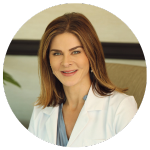Medical advisory boards in the healthcare industry have long been a supplemental way of improving patient outcomes. Companies and societies who work in the dermatology space utilize advisory boards to identify unmet needs, discuss new indications, understand practice challenges or identify gaps in the market.
The unique setting of advisory boards brings together multiple dermatologists so that, through peer-to-peer discussions and critical thinking, the board may generate new ideas or solutions. By directly engaging the dermatology community in this way, medical advisory board meetings have proven to be extremely valuable.
WHAT IS A MEDICAL ADVISORY BOARD?
A medical advisory board is typically made up of 8-15 practicing healthcare professionals and key opinion leaders (KOLs). Discussions are usually facilitated and led by an expert chairperson or a medical science liaison (MSL) who is very familiar with the topic to be discussed. The participants each bring knowledge and skill to the committee and thus provide a variety of perspectives on challenging issues.
WHAT DOES A MEDICAL ADVISORY BOARD DO?
Medical advisory boards are problem solvers, and at their core, they all have the same agenda: to provide insight and advice for peers or company stakeholders. Medical advisory boards help find solutions to problems that companies or medical societies are looking to resolve. A medical advisory board does not make legally binding decisions; instead, they provide information and opinions to others who will then make formal decisions.
WHAT MAKES A SUCCESSFUL ADVISORY BOARD MEETING?
A successful advisory board meeting requires significant planning. Organizers dedicate time, effort and money into making sure the meeting covers the material they are looking to analyze. Advisory boards should be well thought out, highly organized and efficiently run. Below are some aspects that must be considered for execution of a successful advisory board.
THE ROLES HAVE BEEN CLEARLY DEFINED.
Before the meeting begins, the board’s role, responsibilities and objectives should be clearly defined. There should be a well-thought-out plan with related topics to assist in maximizing the productivity of the meeting. For example, if insights are needed regarding a specific ailment, there should be KOLs who specialize in treating that ailment. Additionally, if the goal is to seek expert advice or emerging technology, there should be a specialist present to explain the technology being discussed.
THE RIGHT MEMBERS ARE ON THE ADVISORY BOARD.
To ensure that the medical advisory board functions effectively, the chair establishes working relationships between members. Considering the attendees before the board convenes is particularly important. Ideally, the advisory board includes a mix of practicing healthcare professionals and key opinion leaders.
The chair or company choosing the board should be careful not to select only high-profile medical professionals or “friends” of the organizer because these individuals may share similar values. It is important to diversify the medical advisory board with members who have varying perspectives or different skill sets.
Ideally, a medical advisory board contains 8- 15 individuals that possess experience or credibility regarding the topic to be discussed. This size is considered a sweet spot since it offers enough different perspectives while remaining small enough for careful discussion.
THE STYLE OF MEETING
While crucial to the healthcare industry, the medical advisory board meeting is often informal. In some cases, the meetings can be carried out via phone, e-conference or email. Other times, advisory boards make it a point to meet face-to-face to have discussions occur under one roof or to ensure maximum participation.
No matter the style of the advisory board, the chair will work to foster an interactive and collaborative environment amongst participants. This environment is often generated through group participation, workshops, exercises, presentations and brainstorming. Remember, advisory boards emulate a dialogue or a two-way conversation between advisors. Ideally, the activities result in each participant listening and discussing.
WHAT NOT TO DO AT AN ADVISORY BOARD MEETING
Although medical advisory boards meet informally, things can still go wrong. If you attend an advisory board, you want to make sure that you’re prepared and present for the meeting. Do not show up late for the advisory board or interrupt your peers. Be polite and gracious to your hosts, and do not complain during a session. Most importantly, however, be engaged. Even if you feel like you are an outlier or have a different perspective, there is a reason you were invited, and your opinion is important. Most of all, have fun. Advisory boards are a great way to get to know your peers, learn new indications, hear about new scientific developments and improve patient care.
Author
-

Dr. Kate Zibilich Holcomb is a board-certified dermatologist and owner of Pure Dermatology in New Orleans, La., which she founded in 2017. She is an assistant clinical professor at Tulane University School of Medicine where she supervises the dermatology and plastic surgery residents bi-monthly in their respective cosmetic injectable clinics. She is trainer for both Galderma and Allergan and has a clinical research division in her private clinic. Dr. Holcomb completed her residency at Saint Luke’s Roosevelt Hospital of Mount Sinai in New York City where she received the American Society of Dermatologic Surgery Resident Scholarship two years in a row and the American Academy of Dermatology Travel Grant to Scotland. She was elected chief resident in her third year. She served in the U.S. Navy as a recipient of the Health Professions Scholarship Program, training dermatology residents, and completing her service in 2012. Dr. Holcomb returned to New Orleans in 2012, first working in private practice before starting her own. She is a member of the American Academy of Dermatology, American Society of Dermatologic Surgeons, American Society for Laser Medicine and Surgery, American Acne and Rosacea Society, Skin of Color Society, North American Contact Dermatitis Society, Louisiana Dermatological Society and Women’s Dermatologic Society for which she has served on a number of committees. She enjoys traveling and cooking with her husband, Mark, and her two sons, Paul and Christopher.
View all posts

